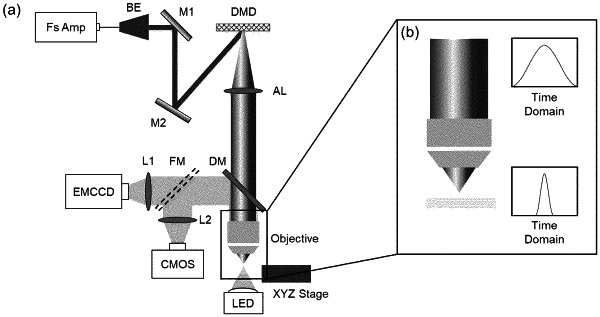| CPC B29C 64/188 (2017.08) [B29C 64/106 (2017.08); B29C 64/268 (2017.08); B29C 64/35 (2017.08); B33Y 10/00 (2014.12); B33Y 30/00 (2014.12); B33Y 40/20 (2020.01); B33Y 70/00 (2014.12); B29C 64/124 (2017.08); B29K 2105/0061 (2013.01); B33Y 40/00 (2014.12)] | 10 Claims |

|
1. A method for hydrogel-based 3D fabrication, comprising:
patterning a hydrogel with a laser with a power density of 0.1 to 100 TW/cm2 by a photo-chemical modification of the hydrogel;
shrinking the hydrogel, then depositing and absorbing a material on the hydrogel, wherein the material is directly bonded to the hydrogel;
dehydrating the hydrogel to produce a three-dimensional structure.
|